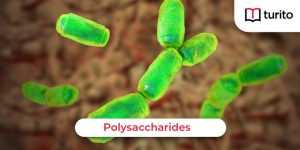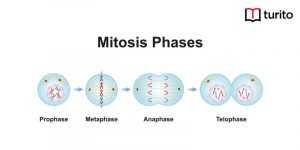What is Habitat?
Habitats are made up of both biotic and abiotic elements. Living things are biotic factors. The biotic components in the home include those with whom students live: their parents, siblings, and even their cat or dog. On the contrary, abiotic elements include all nonliving entities. It includes the mattress, refrigerator, milk, and even breakfast.
Consider your home. A student most likely awoke this morning in their bed. After changing clothes for school, they may have checked the refrigerator in their kitchen to obtain some milk for their porridge and hugged their parents and pet before leaving the house. All of these exchanges occurred in one’s habitat. It is a plant’s, animal’s, or other organism’s natural home or surroundings. It offers food, water, shelter, and space for the species that dwell there.
Habitat Definition in Biology
Habitat meaning: A habitat is a region where an organism (plants, animals and humans) lives. It provides all of the environmental circumstances that an organism requires to exist. That includes everything an animal requires to hunt and collect food, choose a companion, and effectively reproduce.
Similarly, a region that offers the correct sequence of air, light, water, and soil is an ideal habitat for plants. Let’s take the example of the spiny pear cactus. It thrives well in desert places such as the Sonoran Desert in northwestern Mexico because it is adapted to sandy soil, dry weather, and strong sunlight. It would not grow in moist, chilly places with cloudy (shady) weather, such as Oregon or Washington in the United States.
An organism can make a region its habitat only when it includes certain main components: space, shelter, food and water. When a habitat has the proper proportion of all these, it is said to have an appropriate layout. It may meet some but not all of the criteria of a suitable arrangement.
For instance, take an example of a puma habitat. It could include the appropriate number of food (rabbits, deer, rodents, porcupines), water (river, a lake, or spring), and shelter (sufficient trees on the forest floor). On the other hand, the puma habitat would be unsuitable if it did not provide enough room for this enormous predator to create its territory.
When humans begin to create homes and businesses, an animal may miss this component of habitat and space, pushing the animal into an area that is too tiny.
After discussing habitat meaning, let’s analyse the components of the habitat!
Space
The quantity of room an organism requires to flourish varies greatly between species. For example, the ordinary requires only a few inches for a full colony to dig tunnels, collect food, and carry out all necessary operations. Whereas cougars are creatures who like to live solitary and require a lot of space.
They can travel 455 square kilometres (175 sq miles) of land to seek and find a partner. A cougar cannot live in the same amount of space as an ant.
Plants, too, require space. Coast redwood trees, such as those seen in California’s Redwood Nature Reserve, can grow more than 4.5 metres (15 feet) in diameter and 106 metres (350 feet) tall. A tree of that size would not be able to grow and survive in an ordinary county park or backyard.
Space is not similar to territory; an animal’s range is the area of the globe it inhabits. The giraffe, for example, lives on grassland, yet the animal’s range includes eastern, central, and southern Africa.
| Interesting Fact
The habitat of the red-eyed tree frog ranges from southern Mexico to northern South America. Though they are not vulnerable, their habitat is shrinking. The red-eyed tree frog will be unable to live in its rainforest habitat if it continues to diminish at such an alarming rate. |
Food
Food availability is a critical component of a proper habitat setup. Black bears, for example, eat largely flora in the northern section of the United States state of Minnesota, such as dandelions, clover and blueberries. Plants would become rare if there were a famine. The environment would still contain space (huge forest), shelter (forest floor, caves), water (lakes, streams and rivers), and some food. It would no more be an appropriate arrangement.
An abundance of food can also harm a habitat. Algae are small aquatic organisms that produce their food via photosynthesis. Phosphorus and other nutrients aid in the growth of algae.
When the phosphorus level in a freshwater habitat rises dramatically, algae “blooms” or reproduces rapidly, algae die quickly, and the decomposing algae generate an algal bloom. The algal bloom can cause the water to change colour into red, green or brown. Algal blooms could also consume oxygen in the water, damaging the habitat of species such as fish and plants. Excess micronutrients for algae can devastate the food supply in the ecosystem.
| Interesting Fact
Habitat definition: Habitat refers to the geographic place in which plants or animals reside, as well as many nonliving or abiotic characteristics such as terrain, hill, water, and so on. It provides for the survival of its inhabitants. |
Water
Water is necessary for all types of life. Every environment requires some water supply. Some organisms require a large amount of water, whereas others require little. Dromedary camels, for example, are well-known for their capacity to transport goods and people over vast distances without requiring much water.
Dromedary camels only have one hump. They can travel 161 kilometres (100 miles) without water. Dromedary camels have a perfect arrangement in Northern Africa and the Arabian Peninsula, despite having very little water availability in a hot, arid climate.
On the contrary, Cattails and plants thrive in moist environments such as wetlands and swamps. These tall, prickly plants form dense colonies in the mud under rivers, stream banks, rivers and even backyard ponds. The appropriate arrangement of a cattail ecosystem is determined by water.
Consider a pond at the base of a grime cliff. If more loose dirt fell into the pond, it may fill it up and suck the water, leaving little room for the cattails to develop.
Shelter
The shelter of an organism safeguards it from predation and the elements. A shelter also serves as a place to eat, sleep, hunt, and raise a family. Shelters come in a variety of shapes and sizes. For instance, a single tree can ensure safe havens for many creatures.
The bottom of a leaf could provide shelter for a caterpillar. A chilly, moist place near tree roots could provide a habitat for a mushroom fungus. A bald eagle’s refuge could be a tall perch from which to build a nest and hunt for food.
Habitat Fragmentations
Conservators work to protect plants, animals, and other species in their natural environments. Conservationists examine the biogeographical level of various ecosystems and their danger of breakdown to evaluate their state.
Ecologists want to know how the devastation and degradation of natural resources impact species diversity. Habitats become fragmented or split up when human populations and civilisation grow.
As a result of habitat loss and fragmentation, species diversity decreases. The Brazilian Atlantic forest, for example, has been destroyed for farming and lumber.
Conclusion
A habitat is, at its most basic, a place to live. In biology, it refers to an organism’s placement within its natural ecosystem. The habitat definition can be expanded to include where organisms typically live, eat, and reproduce.
Thus, when a community of creatures cluster and evolve with their surroundings and other species, it forms a habitat. Students need to have complete knowledge about habitats, which can help them broaden their outlook on the environment and ecosystem!
Frequently Asked Questions
1. Explain the different types of habitats with examples.
A. There are several instances of habitats throughout the world. Tundra, grassland, mountain ranges, and woods are land-based ecosystems. There are also numerous water ecosystems. Saltwater marshes, intertidal zones, and the deep sea are among them.
Therefore, it is not unusual for habitats to appear to be at odds with the natural environment. Some creatures, for example, can survive in a parking lot or a farm field. Furthermore, some creatures may inhabit more than one habitat during their existence. Migratory birds, for example, fly to radically diverse ecosystems and climates to nest or winter.
2. How do animals adapt to their surrounding habitat?
A. Animals and plants have specific adaptations to their environments. Many animals, for example, have thick coats or a substantial quantity of body fat to help insulate them from the harsh environment in polar places such as the Arctic Circle.
Camouflage is another adaptation employed by animals to adapt to their environments. Animals that can merge into their surroundings are less conspicuous to predators.
3. What is the difference between a habitat and niche?
A. In ecology, habitat and niche are two distinct concepts. The definition of a habitat relates to the particular environment in which an organism lives. However, ecologists use the term niche to refer to creatures functioning in an ecosystem.
A niche is a way or role that animals fit into their particular habitats in ecological terms. Ecologists have concluded that two species cannot fulfil the very same function in the same niche at the very same moment. It is frequently due to resource rivalry.

Relevant Articles
Structural Organisation & Different Levels
Structural Organisation The most extensive, in-depth studies begin with the …
Structural Organisation & Different Levels Read More »
Read More >>Polysaccharides – Structure, Types, Characteristics and Functions
What is a Polysaccharide? Polysaccharides are a major group of …
Polysaccharides – Structure, Types, Characteristics and Functions Read More »
Read More >>What is Mitosis? Phases of Mitosis, Diagrams, Cytokinesis
Mitosis phase Have you ever wondered what the yeast in …
What is Mitosis? Phases of Mitosis, Diagrams, Cytokinesis Read More »
Read More >>What is Cell Division? Process, Cell Cycle, Mitosis
What is cell division? Each day, every hour, every second, …
What is Cell Division? Process, Cell Cycle, Mitosis Read More »
Read More >>




















Comments: